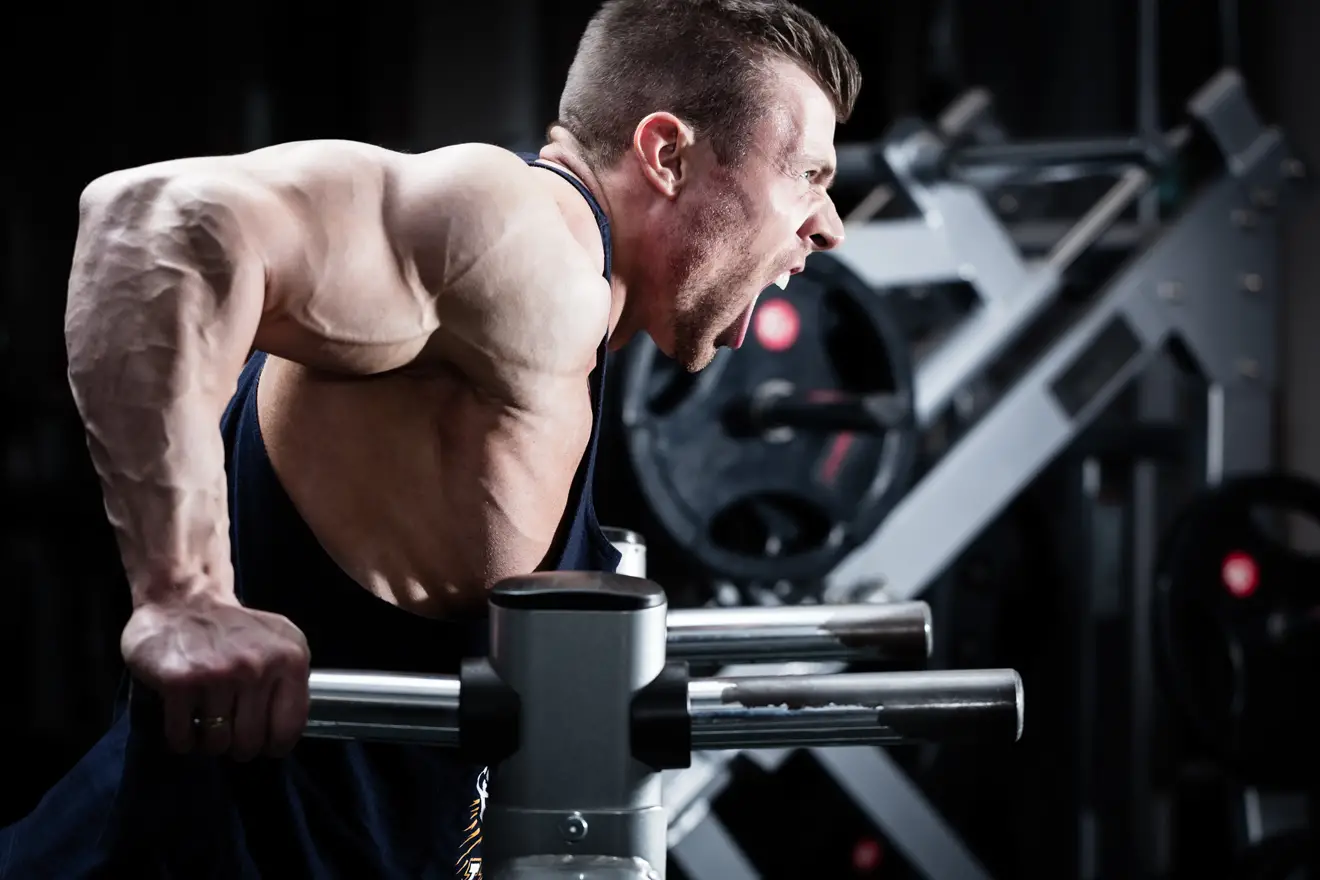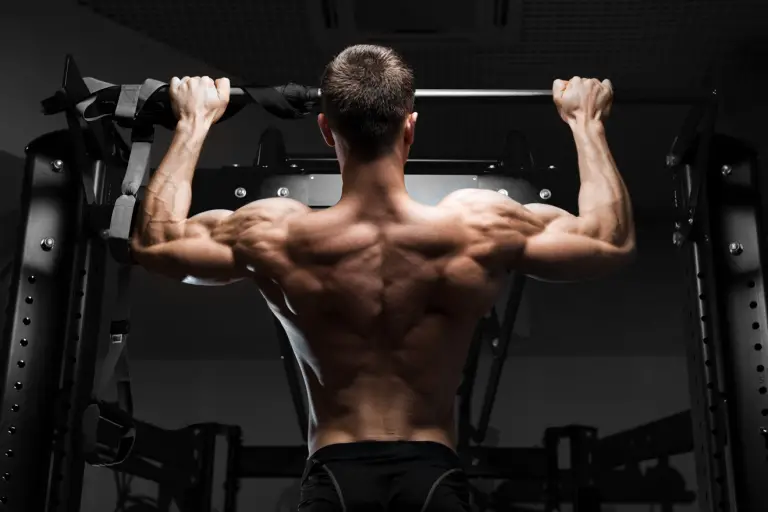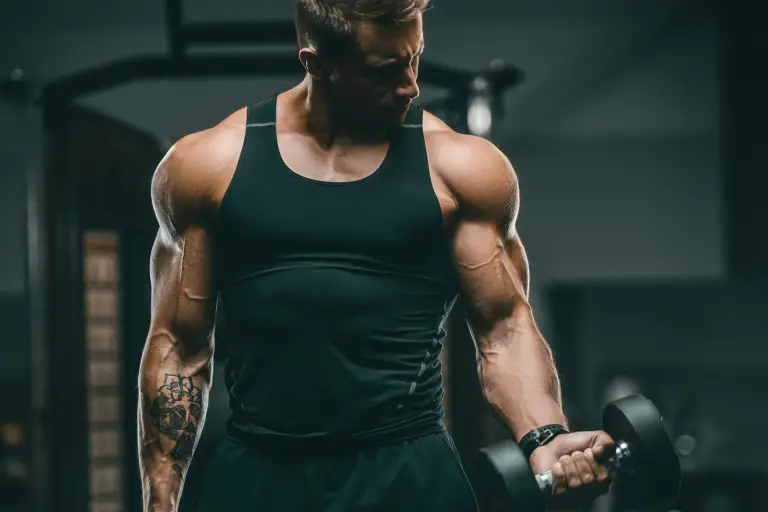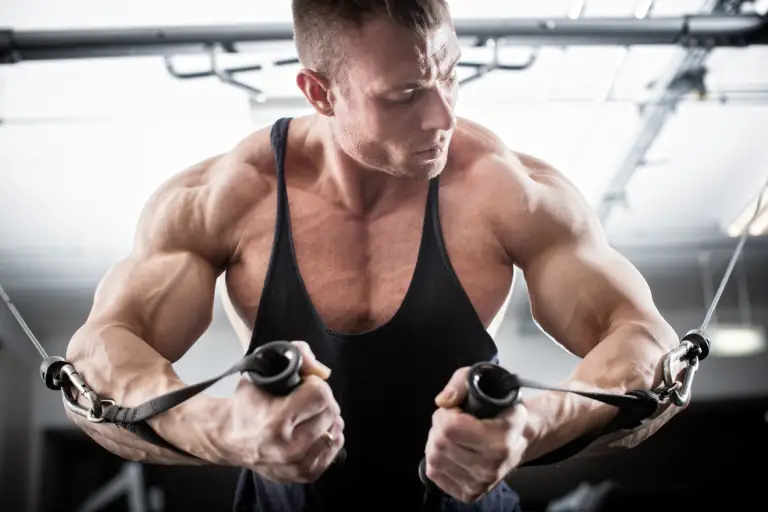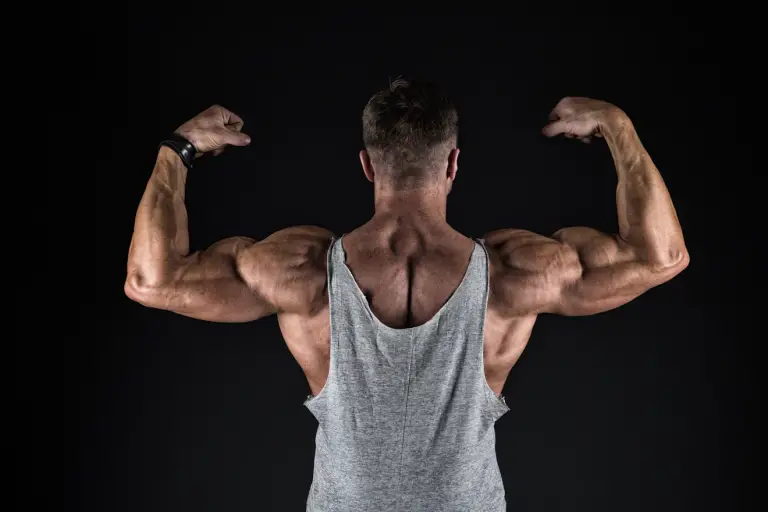How to best train your triceps for muscle growth
The triceps brachii (hereafter ‘triceps’) is a large upper-arm muscle that works alongside the anconeous muscle to extend the elbow. Unknown to many lifters, the triceps is the second largest muscle in the upper body, only slightly smaller than the deltoid (shoulder muscle).
With such a massive size, it shouldn’t be a surprise that growing the triceps is crucial for people who want bigger arms. Yet, many lifters do not fully understand how to train this muscle properly.
This article will explain how to best train your triceps for muscle growth. As part of this, you will also learn the anatomy of the triceps and how certain exercises will target it in different ways.
Basic anatomy and function of the triceps
The triceps is comprised mainly of type II (fast-twitch) muscle fibers, which make up its three separate muscle heads: the lateral (outside) head, the medial (middle) head, and the long head. The lateral and medial heads originate from the humerus (bone of the upper arm), whereas the long head originates from the scapula (shoulder blade). All three heads then insert on the ulna (Figure 1).
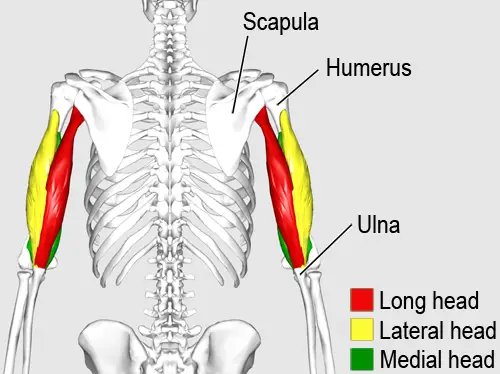
All three heads of the triceps function to extend (straighten) the elbow, such as in a triceps rope push-down exercise. Additionally, because the long head crosses over the shoulder joint, it weakly assists other muscles in shoulder adduction and shoulder extension, two movements that are present in back exercises such as the lat pull-down and bent-over dumbbell row.
Training considerations to maximize triceps growth
1. Choosing the right triceps exercises
The triceps is best trained in exercises that involve elbow extension. This includes simple isolation exercises such as:
- Triceps rope push-down
- Standing one-arm overhead dumbbell triceps extension
- Lying barbell triceps extension
- Cable triceps kickback
The triceps is also trained in most compound pushing exercises, such as the push-up, barbell bench press, dumbbell shoulder press, and dips. More importantly, the triceps is best targeted when these exercises are done with a narrow grip and the elbows tucked close to the body, such as in the:
2. Doing the correct number of sets and reps
Volume is an essential factor in muscle growth. Performing an insufficient number of repetitions and sets during your workouts can leave your body without enough stimulus to grow. Likewise, doing too much volume can hinder your body’s ability to recover and grow.
Since the triceps is mainly comprised of fast-twitch muscle fibers, it is best trained with heavier loads and moderate amounts of repetitions. To most efficiently grow your triceps, this means you should:
- Do 3 to 6 sets per exercise
- Perform 6 to 12 repetitions per set
- Use weight equivalent to between 67% and 85% of your one-repetition max
Remember that these are general recommendations for maximizing muscle growth. The exact number of sets and reps you should do depends on your training experience and goals. For further guidance on how much total volume you should be doing, refer to our weight training programs.
3. Following the right training tempo
To maximize muscle growth, use a 2:2:3 training tempo when performing any triceps exercise. For the triceps rope push-down, this would mean taking two seconds to concentrically push the weight down, pausing at the bottom with your arms extended for two seconds, and then slowly letting the weight rise back to the starting position over the next three seconds. Using this tempo will maximize the amount of muscle growth stimulus your triceps receive on every repetition.
4. Using a full range of motion
As with all muscles, the triceps benefits most from using a full and complete range of motion. This means you should fully (but gently) straighten your elbow on every exercise while squeezing the triceps. Additionally, this means stretching the muscle as much as possible, such as by letting the dumbbell go far down your back in a seated dumbbell overhead triceps extension.
Using a full range of motion will ensure that your triceps gets sufficiently trained at all muscle lengths, maximizing its growth potential.
5. Resting an appropriate amount of time between sets
Allowing your triceps enough time to recover between sets is vital to maximizing growth. Generally, this means resting between 30 and 90 seconds between each set.
Since the fast-twitch muscle fibers of the triceps quickly fatigue and require additional time to recover, you may want to stick to the upper end of this rest range for best results.
Can you emphasize a specific head of the triceps?
It is not possible to emphasize the involvement of the lateral or medial triceps heads. However, the long head can be preferentially targeted because of its origin point on the scapula.
Since the long head crosses the shoulder joint, adjusting the position of the shoulder (or elbow) will change how much it is stretched. The more stretched a muscle is under load, the more force it can contribute to the movement, and thus the more susceptible to growth it will be.
To stretch the triceps long head, your elbow must be at shoulder height or above. Therefore, the exercises that best emphasize the long head of the triceps include:
- Seated dumbbell overhead triceps extension
- Incline EZ bar triceps extension
- Lying cable skull crusher
Putting it all together
Following the training considerations in this article will ensure that you maximize your triceps training results by doing the correct amount of volume, using a proper training tempo, and resting an appropriate amount of time between sets. Additionally, you will do triceps exercises that place your elbow into various positions, including overhead, to sufficiently train all three heads.
All of these training guidelines are accounted for in our weight training programs, which are freely available and designed to deliver great results.

